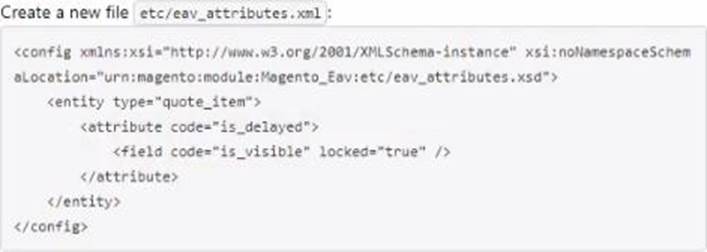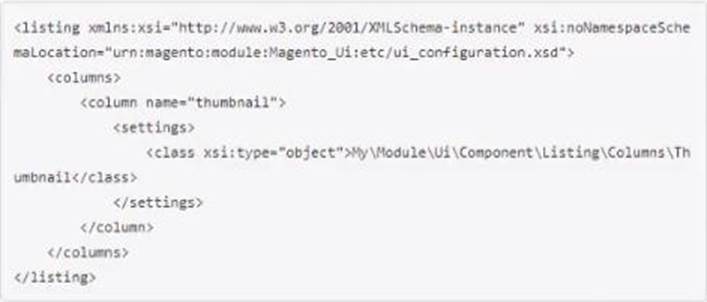Adobe AD0-E709 Adobe Commerce Developer Expert Online Training
Adobe AD0-E709 Online Training
The questions for AD0-E709 were last updated at Oct 31,2025.
- Exam Code: AD0-E709
- Exam Name: Adobe Commerce Developer Expert
- Certification Provider: Adobe
- Latest update: Oct 31,2025
When building a custom page we need to get a collection of data. To determine how many items are in this collection, the Adobe Commerce developer uses $collection->count() . This sometimes is slow and causes some delay.
What is the reason?
- A . The collection is loaded first and then the number of items in the collection are returned.
- B . Before the collection is loaded, the framework performs left joins for all related attributes
are added to the query. - C . The framework internally uses SELECT count(-) and that is slower than loading the collection.
The developer is required to convert a modules database scripts from old install/upgrade setup files to a data patches format and does not want to apply database changes that were already done by install/upgrade scripts.
The current module version is 1.5A
What would be the recommended solution to skip changes that were already applied via old format (install/upgrade scripts)?
- A . This is not possible. A module cannot implement both data patch and install scripts.
- B . Inside apply() method, check for module version and run the code it version is less than 134,
- C . Implement PatchVersioninterface and return 1.5.4 on the getversion() method.
An Adobe Commerce Developer is tasked with creating a module which generates a sitemap by cron. While writing the module, they realize they will need to use environment emulation to ensure the data is generated from a frontend perspective. They notice that the Emulation: :startEnvironmentEmulation() method accepts a $force parameter.
Why would this be set to true?
- A . To reset the environment emulation configuration to the current store.
- B . To emulate a new environment while already emulating a different one.
- C . To ignore any exceptions which may otherwise get thrown during emulation.
There is the task to create a custom product attribute that controls the display of a message below the product title on the cart page, in order to identify products that might be delivered late.
The new EAV attribute is.deloyed has been created as aBooleanand is working correctly in the admin panel and product page.
What would be the next implementation to allow the is_delayed EAV attribute to be used in the .phtml cart page such as $Block->getProduct()->getIsDelayed() ?
A)

B)

C)

- A . Option A
- B . Option B
- C . Option C
An Adobe Commerce Developer is tasked with creating a custom form which submits its data to a (rontend controller. They have decided to create an action and have implemented themagntoFrameworkAppAction|HttpPostInterface class, but are not seeing the data being persisted in the database, and an error message is being shown on the frontend after submission.
After debugging and ensuring that The data persistence logic is correct, what may be cause and solution to this?
- A . Magento does not allow POST requests to a frontend controller, therefore, the submission functionality will need to be rewritten as an API endpoint.
- B . The developer forgot to implement a ValidatePostData() method in their action. They should implement this method: all non-validated POST data gets stripped out of the request and an error is thrown.
- C . Form key validation runs on all non-AJAX POST requests, the developer needs to add the form_key to their requests.
A client wants to change the look and behavior of the products thumbnails in the products grid on the admin panel.
Which code would be added to the module’s view/adminhtml/ui_component/product_listing.xmlfile?
A)

B)

C)

- A . option A
- B . option B
- C . option C
An integration named Marketing is created on the Adobe Commerce instance. The integration has access on Magento_Customer::customer resources and the access token is xxxxxx .
How would the rest API be called to search the customers?
- A . Passing integration name and access token as http auth credentials:

- B . Using integration name as username and access token as password, get the admin token
(YYYYYY) via:

- C . Using the integration access token as Bearer

When using the traditional Magento frontend, an Adobe Commerce developer is tasked to create a before plugin every time that the totals information loads on the cart page summary.
Considering performance, where would the di .xml be added?
- A . etc/di.wni
- B . etc/frontend/di.xml
- C . etc/webapi_rest/di.xml
A product has some stock and quantity in the Sources panel in its edit view m the admin:

But when trying to add this product to the cart on the frontend. the following error is displayed:
"The requested qty is not available".
Why was this error received?
- A . The sales channel tor the current website is disabled.
- B . The total quantity of this product in all active quotes has reached its available stock.
- C . The number of reservations for this product has already reached its available stock.
An Adobe Commerce developer adds a new extension attribute to add an array of values to the invoices that are fetched through the APIs.
After a while, their technical manager reviews their work and notices something wrong with the extension_attributes.xml file that the developer created in their module: extension_attributes for="MagentoSalesHotelOrderInvoiceRepository"> attribute code"my_code" type=string]’’> </extension_attribute>
What is the problem with this xml snippet?
- A . The extension attribute references the repository instead of the interface it implements (MagentoSalesApiinvoiceRepositoryinteface
- B . The type is wrong, string[] should be replaced with array.
- C . The extension attribute references the wrong interface it should have referenced the MagentoSalesAPiInvoiceinterface.
Latest AD0-E709 Dumps Valid Version with 135 Q&As
Latest And Valid Q&A | Instant Download | Once Fail, Full Refund

